Tall, pointed fins and unique markings on the scales give the angelfish its iconic appearance. This fish species is the most popular choice for freshwater aquariums. Angelfish can be marbled, striped, spotted, or even completely white, and there are many different types of angelfish to choose from.
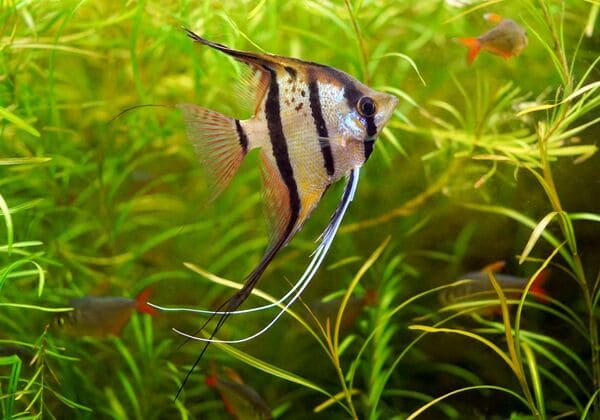
What is an angelfish?
The angelfish is a species of cichlid fish found in the Amazon river system and several South American countries. Angelfish get their unique appearance from their long fins, which flow gracefully through the water as they swim, and species are often identified by their different types of stripes or markings.
After years of artificial improvement and cross-breeding, many new strains of angelfish have been obtained. According to the length of the tail fin, they can be divided into three categories: short tail, medium long tail and long tail. In addition, according to the markings and color variations of the fish, they have formed a variety of variants. In the domestic market, we commonly see varieties including white angelfish, black angelfish, gray angelfish, marble angelfish, half-black angelfish, mandarin duck angelfish, three-color angelfish, gold-headed angelfish, and glass angelfish , diamond angelfish, panda angelfish, red-eyed angelfish and more. However, in the domestic market, Egyptian angelfish is not very popular, and its popularity in the country is relatively low.
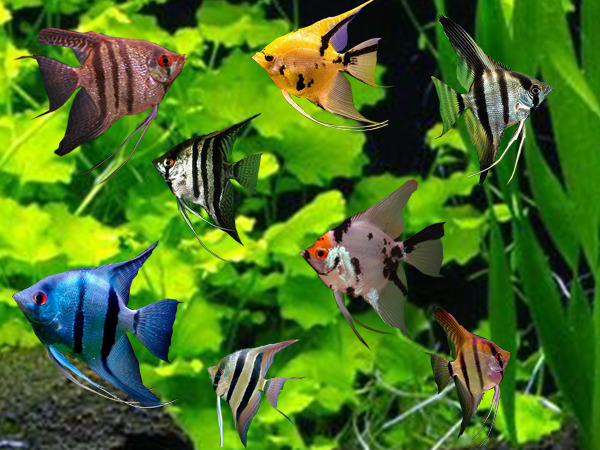
Domestic freshwater angelfish are the result of years of selective breeding and are characterized by a variety of attributes such as background body color, stripes, spots, marbled colors (orange and black), and even opercular (gill cover) pigmentation.
1. Silver Angelfish
Silver angelfish have long been a mainstay of the freshwater angelfish trade. Their color changes are most similar to the "wild type" P. scalare of the species. They are very hardy and one of the easiest angelfish to care for. Three vertical black bands fade or darken depending on the fish's mood.
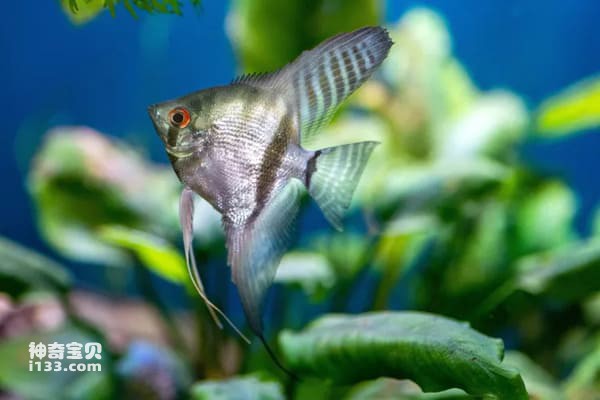
Species Overview
Length: up to 15.24 cm (maximum 25.4 cm in the wild)
Physical Characteristics: Silver body, red eyes; three main dark black bands - one across the eye and two across the body
2. Zebra Angelfish
This interesting variation is called the zebra angelfish. Zebras have four to six rings, unlike the silver angelfish, which only has three rings. The red eyes of an angelfish are a sign of complete maturity and health. However, not all breeds develop red eyes.
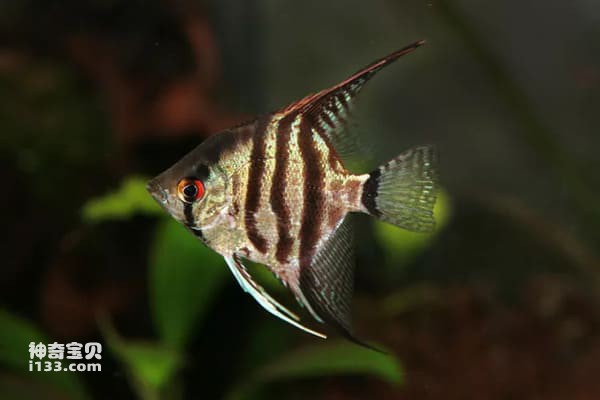
Species Overview
Length: up to 15.24 cm
Physical properties: Four rings in total; one through the eyes and three to five on the body
3. Koi Angelfish
Koi Angelfish are similar in color to Japanese Koi, with a white body with black and orange/red spots. When young, the fish may have a red underside of the eye, which fades as it ages. The amount of orange seen varies depending on the fish's stress level; the orange color will become darker at higher pressures. The Koi variety is similar to the Golden Marble variety, but does not have the stripes.
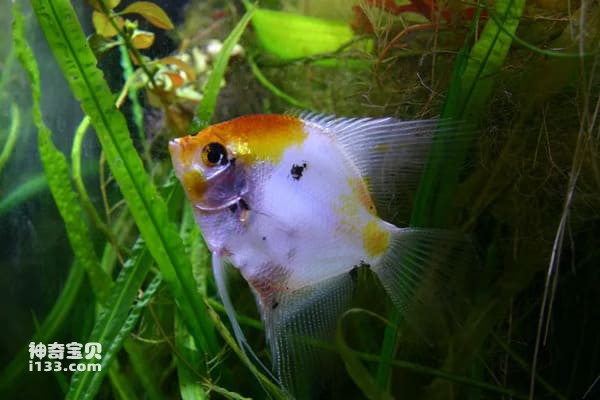
Species Overview
Length: up to 15.24 cm
Physical Characteristics: White with black spots; varying amounts of orange on head, depending on genetics selected; black marbling coverage ranging from 5% to 40%
4. Black Lace Fairy Fish
Black lace morphs are silver or zebra angelfish in which an extra black gene is present. It is black with flowing lacy fins. It is considered the most attractive of all angelfish. The lace angelfish was first bred in the 1950s.

Species Overview
Length: up to 15.24 cm
Physical Characteristics: Very dark-colored fish with elegant lace patterns on its fins
5. Golden Angelfish
In the late 1960s, an angelfish breeder in Milwaukee was surprised to see strangely colored fry emerge from a spawning of black lace angelfish. The fish's recessive gene eventually produced the golden cobra, which became the first golden angelfish in the aquarium trade. Golden Angels are now relatively common and have been hybridized with other breeds to create unusually colored specimens.
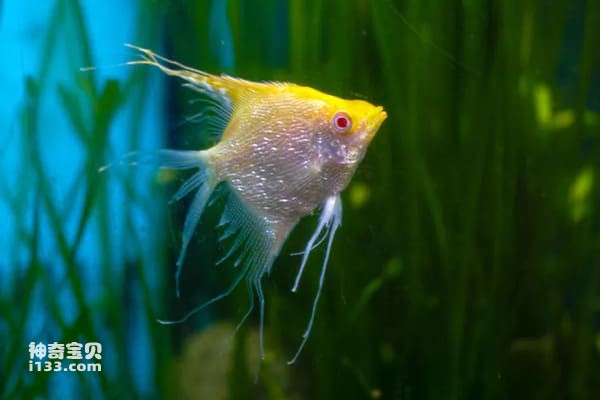
Species Overview
Length: up to 15.24 cm
Physical Characteristics: Light golden body, dark yellow or orange crown
6. Blushing Angelfish
In these angelfish, the blushing gene is on full display. The term "blush" refers to the lack of pigmentation on the operculum (gill cover), allowing the red color of the gills to show through. Many other color morphs share the blushing gene to some extent, but the breed known simply as "Blushing Angel" usually has no dark markings at all, nor any stripes. The only color is under the fish's transparent cheeks.
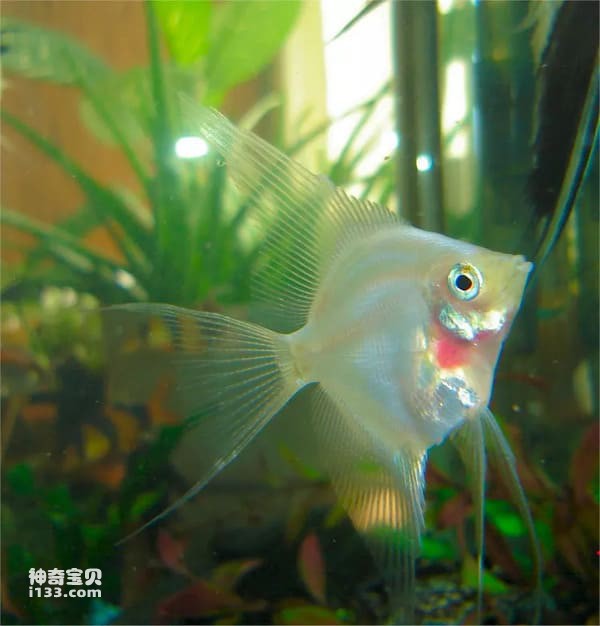
Species Overview
Length: up to 15.24 cm
Physical Characteristics: Silver or white, with blood-colored cheeks
7. Marble Angelfish
There are many color variations, including the marbling gene - a mottled arrangement of colors that creates a unique pattern on each fish. classicThe marbled angelfish will show a unique marbling pattern on its body, plus stripes on its fins. A touch of gold has been added to this specimen, making it particularly attractive.
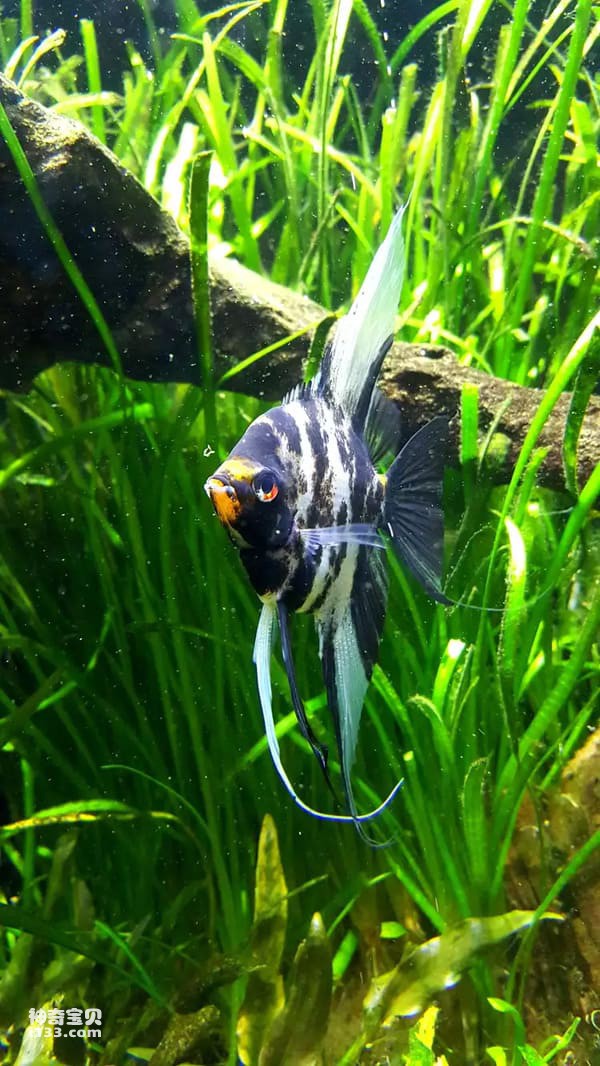
Species Overview
Length: up to 15.24 cm
Physical characteristics: unique black, white, gold marble pattern,
8. Golden Marble Angelfish
The color markings of marbled angelfish show extensive marbling—no two fish will be exactly alike. Golden Marbles are often considered a subtype of Koi Angelfish.
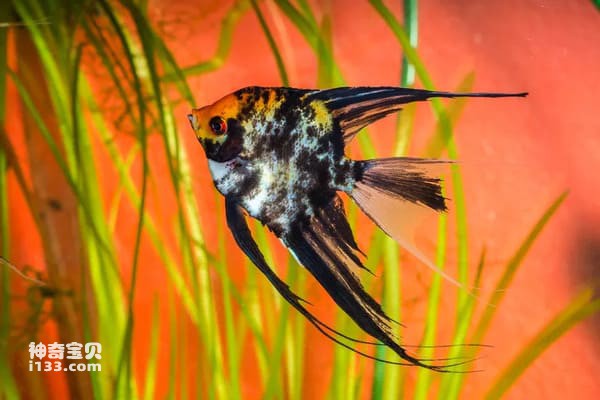
Species Overview
Length: up to 15.24 cm
Physical Characteristics: Gold patches and unique marble pattern
9. Half-black angelfish
This fish is known as the semi-black angelfish and has been around for more than half a century. The tail of the body is black, not just a black band. Other color features, such as marbling or blushing, are sometimes seen. Breeding half-black angelfish can be challenging.
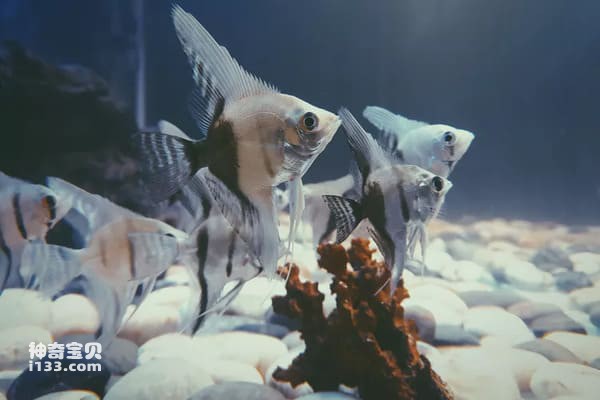
Species Overview
Length: up to 15.24 cm
Physical Properties: Silver, darker at the rear
10. Altu Angelfish
Angelfish, more simply called angelfish, are not commonly seen in the aquarium trade. It is larger, deeper and flatter than the common species P. scalare and all hybrids. Altum angelfish are more sensitive to changes in water conditions and require larger, deeper tanks.
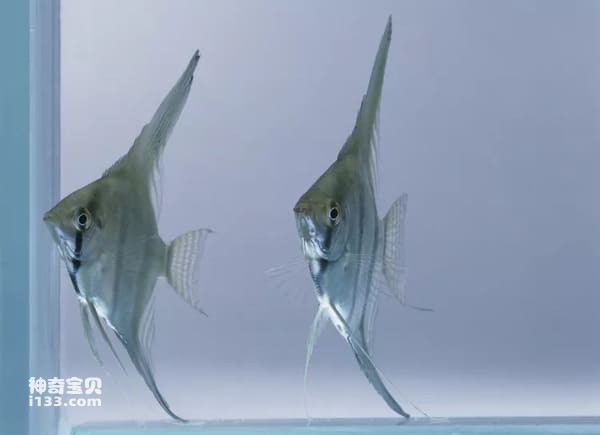
Species Overview
Length: up to 17.78 cm, up to 22.86 cm
Physical characteristics: Silver body with brown or black longitudinal bands; body vertically stretched, height greater than length
No matter which angelfish you choose to add to your aquarium, make sure they are in a tank large enough to accommodate their full size as well as any other fish you may add. They prefer warm, soft water, so make sure the other creatures in the aquarium are suitable for them as well.
animal tags:
We created this article in conjunction with AI technology, then made sure it was fact-checked and edited by a Animals Top editor.